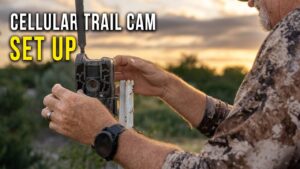
Trail cameras have revolutionized the way we observe cell camera and document wildlife in their natural habitats. These compact and versatile devices have become indispensable tools for researchers, wildlife enthusiasts, hunters, and conservationists alike. In this comprehensive guide, we’ll delve into the world of trail cameras, exploring their features, applications, and tips for maximizing their effectiveness.
What is a Trail Camera?
A trail camera, also known as a game camera or wildlife camera, is a rugged, weatherproof camera designed for outdoor use. These cameras are typically equipped with motion sensors and infrared technology, allowing them to capture high-quality images and videos of wildlife without the need for human intervention. Trail cameras are commonly used for monitoring wildlife populations, studying animal behavior, and enhancing hunting experiences.
Features to Consider:
When choosing a trail camera, there are several key features to consider:
- Resolution: Look for cameras with high-resolution capabilities (e.g., 12 megapixels or higher) to capture clear and detailed images.
- Trigger Speed: Opt for cameras with fast trigger speeds (typically less than 0.5 seconds) to ensure that you capture wildlife in action.
- Detection Range: Consider the detection range of the camera’s motion sensors, which determines how far away wildlife can trigger the camera.
- Infrared Technology: Choose cameras with infrared LEDs for night vision capabilities, allowing you to capture wildlife activity in low-light conditions.
- Battery Life: Check the battery life of the camera, especially if you plan to deploy it for extended periods in remote locations. Consider using rechargeable batteries or solar panels for sustainable power sources.
Applications of Trail Cameras:
Trail cameras have a wide range of applications across various fields:
- Wildlife Research: Scientists use trail cameras to study animal behavior, monitor population dynamics, and track the movements of elusive species.
- Conservation: Trail cameras play a crucial role in conservation efforts by providing valuable data on threatened and endangered species, helping to inform conservation strategies and habitat management plans.
- Hunting: Hunters use trail cameras to scout for game, identify patterns in animal movements, and increase their chances of a successful hunt.
- Ecotourism: Trail cameras are used in ecotourism ventures to provide visitors with immersive wildlife experiences, allowing them to observe animals in their natural habitats without disturbing them.
- Home Security: Some homeowners use trail cameras for home security purposes, monitoring their properties for intruders or wildlife activity.
Tips for Using Trail Cameras Effectively:
To get the most out of your trail camera experience, consider the following tips:
- Location is Key: Choose strategic locations for deploying your trail cameras, such as game trails, feeding areas, or water sources, to maximize your chances of capturing wildlife.
- Concealment: Use camouflage or mounting accessories to conceal your trail cameras and minimize their visibility to wildlife and potential thieves.
- Regular Maintenance: Check your trail cameras regularly for signs of damage, adjust their settings as needed, and replace batteries or memory cards as necessary.
- Data Management: Organize and catalog the images and videos captured by your trail cameras using software or apps designed for this purpose, making it easier to analyze and share your findings.
- Respect Wildlife: Practice ethical photography and respect the natural behavior and habitats of the animals you capture on camera. Avoid baiting or disturbing wildlife for the sake of a photo.
Conclusion:
Trail cameras offer a fascinating glimpse into the hidden world of wildlife, allowing us to observe and document animals in their natural habitats with minimal intrusion. Whether you’re a scientist, hunter, or nature enthusiast, investing in a trail camera can open up a world of possibilities for exploration and discovery. By considering the features, applications, and tips outlined in this guide, you can make the most of your trail camera experience and capture stunning images and videos of wildlife like never before.
